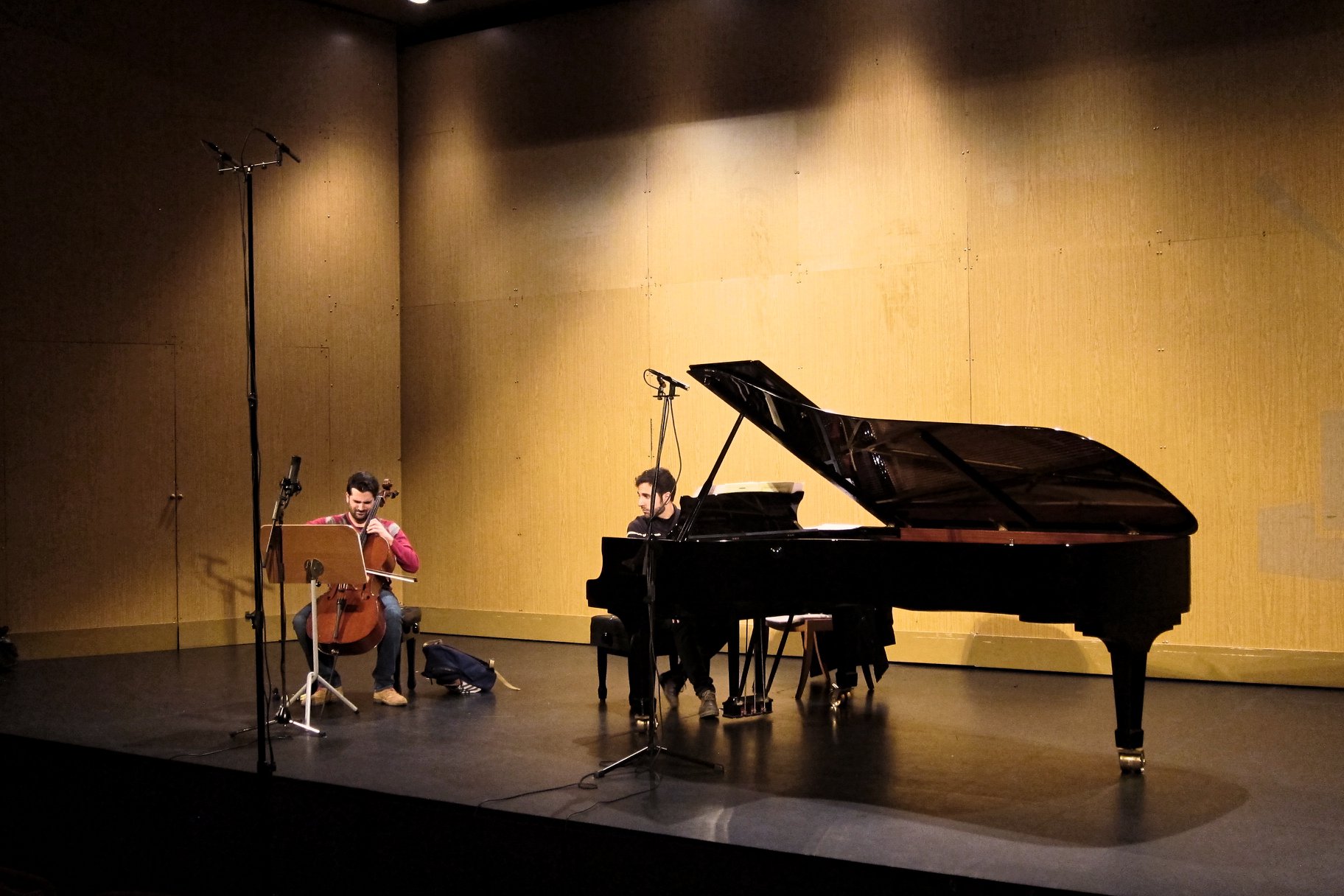While many genres of music are customarily recorded in a studio, with overdubbing and flexible acoustics (vocal booths, acoustic panels, etc.) giving options to create a dry or wetter sound and allowing complete creative control sound’s resonance, genres such as classical, jazz and folk usually require the musicians to be playing in the same physical space together, and often rely on the acoustic to enhance the music.
What are some factors that we should keep in mind when recording these kinds of ensembles and bands?
Deciding on a space
Choosing an acoustically flattering space for the size of the ensemble and type of instruments is important when aiming to capture a naturally resonant sound. Classical music recordings (and live concerts) are usually made in spaces such as churches and large halls with acoustics that naturally enhance the sound of the instruments. Some jazz and other acoustic genre recordings also use resonant spaces to create a unique sound (the German label ECM is a great example). Digital or analog reverb can of course be used to further enhance the acoustic, but starting with a great-sounding space will be a huge advantage. You and/or the musicians should get an idea of the space before the recording session: by visiting and seeing the size of the space, hearing the reverb time, reflections, and how sound reacts there, or listening to another recording that was made in the space, or attending a performance there.
Direct sound vs. room sound
When you know what kind of space you will be recording in and how resonant it is, you can decide on how to record it. While simple acoustic recordings can be achieved with a stereo pair of microphones to capture a soloist or ensemble in a room, if you have access to multiple microphones, it will give you the option to blend between the close sound of each instrument and to produce a far more detailed recording.
An important aspect of the acoustic recording is finding a good balance between a main microphone array that captures the whole ensemble (e.g. stereo configurations such as AB, ORTF, and Decca Tree, or a surround setup), and spot microphones that are placed close to each instrument to pick up more detail. An additional pair of ambient microphones could also be placed much further away from the ensemble to capture more of the sound of the space and have the option to blend it in.
The space’s reverb time and how pleasant it naturally sounds could affect your microphone choice and type of stereo setup. For example, a naturally flattering acoustic might be best captured by an AB set up with omni mics, while a space that has a very long reverb time might be better balanced by using an ORTF with cardioids, and no additional ambient mics. Jazz, folk or music in a small dry acoustic will likely benefit from more use of the direct spot mic sounds with a tasteful amount of room acoustic blended in for cohesiveness.
Placement of microphones and musicians
When capturing a soloist or a whole ensemble with a stereo or surround microphone array, along with the acoustic space around it, your placement of the microphones and the players will affect all aspects of how it sounds: the depth, frequencies, panning, and potential issues such as phase. Depending on the shape of a space, placing the main microphone array higher above the ensemble can sometimes sound better than placing them further back. Think about how near or far each instrumentalist is to the main mic array, as well as how far left or right.
Another thing to note: while positioning the microphones and musicians in the space in a way that will allow you to capture the best sound is ideal, sometimes you might need to compromise for the players to move to their preferred spot to see and hear each other better and to obtain the best musical performance and balance that they can.
Another aspect to consider is the delay between the main microphones and each spot microphone. Some audio engineers like to measure and account for this delay by recording a loud click sound close to the microphone capsule, measuring the milliseconds or samples of difference in the waveforms between the main mic and the spot, and inputting this delay on the corresponding channel in the DAW so that the waveforms line up. In some cases, this can make the sound clearer and better, while in other cases it might sound better without inputting the delay. It’s all down to what you hear!
Further learning
This text is only a small introduction to the topic of capturing music within an acoustic space. If you’re starting out with this kind of recording, it’s a good idea to read more in-depth on acoustic music recording, stereo and surround techniques, and room acoustics. If possible, shadow an audio engineer on a location recording session, and most importantly gain experience by doing recordings in different spaces and learn by experimenting!
Photo by India Hooi of recording session with Duo Otero.
